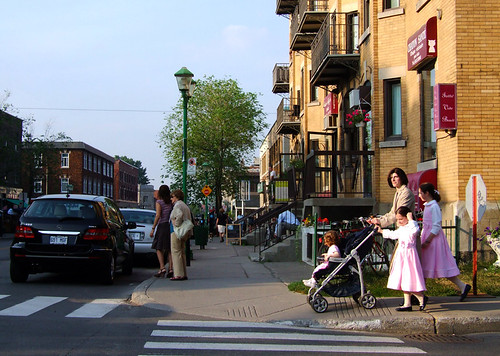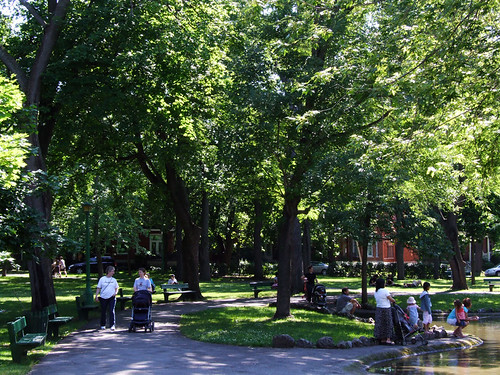A Walk in a Patriarchal Neighborhood
September 3, 2009
There were children everywhere, as if this was a reservation for a vanishing tribe. They were running and playing. They were talking and laughing. The girls wore dresses of pink or blue. The boys were dressed in shirts and slacks, not T-shirts with commercial logos. They crowded the sidewalks, some in strollers and others on their feet. Some walked along holding hands with a mother or an older sibling. A boy and a girl of about ten years were running an errand for their parents with plastic bags in their hands. A boy tore down the sidewalk on his bicycle, his head close to the handlebars. A group of teenage girls in dresses stood on a corner in long skirts, with a conspiratorial look in their eyes.
It would be hard to kidnap a child here. There were mothers everywhere. They were pushing strollers, putting children into cars, standing in small groups chatting. Many of them were young and they all wore dresses or skirts with stockings. It was strange. They were smiling and relaxed. Mothers with many young children are supposed to be angry and depressed. They were smiling and laughing. Two old women sat outside one townhouse and watched children play.
There were some men, walking in pairs, strolling with their wives pushing strollers or visible through the front windows talking on the phone. There were people of every age, interacting and proceeding through the day together. But, most of all there were children. Was this a museum? Perhaps it was called, “The Neighborhood Museum,” a place where people come to see what a real neighborhood looks like.
Such was the scene earlier this week in Outremont, a neighborhood of Montreal I happened to be visiting. This part of Outremont is home to Hasidic Jews. The community has grown in recent years and now numbers more than 15,000. It subsists peacefully with the urban professionals who share the neighborhood in spite of occasional tension. Not long ago there was a controversy. The Orthodox Jews paid for new tinted windows in the local YMCA. Apparently, their teenaged boys were gathering outside a nearby school to watch the women in the Y work out in scanty clothing. Some non-Jewish residents said the new windows were an offense to religious freedom and made yoga exercises more difficult.
This neighborhood is emphatically patriarchal. I will never be an Orthodox Jew and yet this is my tradition, more familiar to me than the sterile, childless no-man’s land that passes for a neighborhood in most parts of America. This sort of patriarchy doesn’t mean imprisonment for women. It means freedom from Sex and the City. It doesn’t mean women never work or never make money. It means a peaceable order, and a new and abundant generation. It means men confidently strolling down the street. It brings people out of their homes and into the neighborhood, laughing and talking, running and playing.
Interestingly, these Orthodox Jews survive in the modern economy. How is it they can afford all these children and all these wives at home? Haven’t they heard that all this is no longer possible?


.
